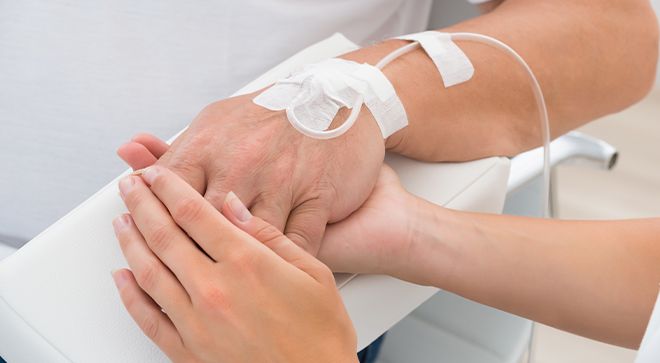Article
At-Home Prehab May Improve Outcomes Following Lung Cancer Surgery
Author(s):
Recent study results demonstrated that an at-home prehabilitation program may improve surgical outcomes in patients with lung cancer.
Patients may experience improved outcomes following lung cancer surgery by participating in a virtual prehabilitation program before undergoing the procedure, according to study results presented at the 2020 World Conference on Lung Cancer.
“Prehabilitation is the practice of enhancing a patient’s functional capacity before surgery, with the aim of improving post-operative outcomes,” explained co-study author Stephanie Wynne, while presenting the findings. “In lung cancer surgery, (prehabilitation) is associated with improved functional capacity and quality of life and reduced hospital length of stay, post-operative complications and readmission.”
Additionally, a prehabilitation program may help make patients more eligible for a lung cancer surgery to begin with, as Wynne explained that lung resection is the most common radical treatments for lung cancer, yet only 10 to 30% of patients referred are candidates. Others are deemed not eligible for surgery because of their disease stage, surgical risk factors, advanced age, performance status, comorbidities, or reduced cardiopulmonary reserve.
While prehabilitation traditionally takes place face-to-face, a virtual option that occurs via telephone or video conferencing, is particularly attractive in the wake of the COVID-19 pandemic, when patient and providers alike are trying to limit unnecessary clinic visit.
The study included 20 patients who were undergoing lung surgery at a National Health Service Trust in London. They were all given a personalized home-based exercise program, and a diary to monitor compliance. Patients also were given written advice and counseling for symptom management and had virtual follow-ups weekly or every other week.
Participants were assessed before and after the interventions on the following outcomes:
- MRC Dyspnoea scale
- Physical activity levels (measured by the Godwin Leisure Time Exercise Questionnaire [GLTEQ])
- Dietary needs
- Mood (measured by the Hospital Anxiety and Depression Scale [HADS])
- Fatigue (measured by FACIT-fatigue)
- Exercise capacity (measured by the 1-minute sit-to-stand (STS) test
There was a 45.9-point improvement in the average of GLTEQ scores, meaning that patients’ self-sufficiency was improved. With the intervention, all of the patients on the study met recommended levels of daily physical activity, and there as an average improvement of 5.1 in the STS score.
“Our findings demonstrate that remote, home-based prehab is feasible, [and it] may improve a patients’ pre-surgical physical activity and exercise level,” Wynne said. “This is pertinent given the ongoing uncertainty surrounding COVID-19 and its impact on face-to-face health care delivery.”
This study showed that at-home prehabilitation is safe and feasible, but should be investigated further, especially for elderly or vulnerable patients who may have limited access to technology.
“We’re now designing a triage tool to best support patients based on their therapeutic needs and access to technology,” Wynne said.
For more news on cancer updates, research and education, don’t forget to subscribe to CURE®’s newsletters here.




